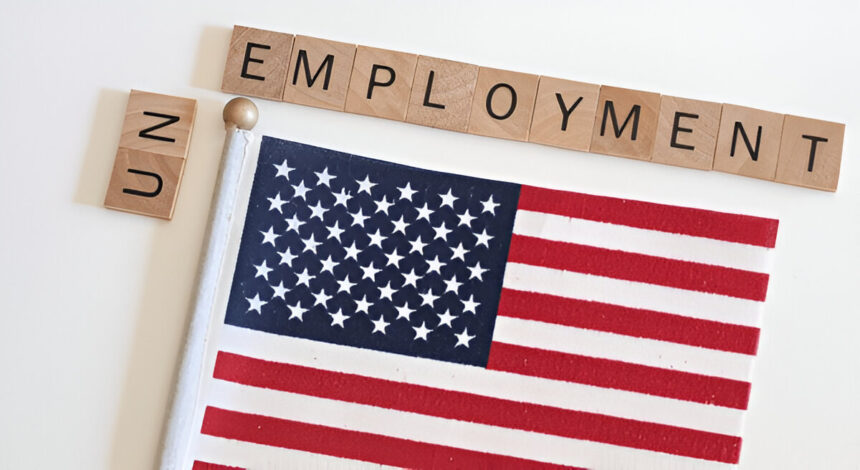Ever wondered what the U.S. economy is really doing, beyond the headlines? Well, a recent report just pointed us to a critical clue hidden deep within the U.S. labor market signal. It’s the “jobs plentiful minus jobs hard to get” metric from the Conference Board’s consumer confidence survey, and in June 2025, it plunged to 11.1%. That’s its lowest point since early 2017, if you ignore the weird pandemic years.
Why should we care about this seemingly obscure number? Because, this drop has historically been a pretty good predictor of a rising unemployment rate. We could see the jobless rate climb from May’s 4.2% to a concerning 6%! While everyone is buzzing about what this means for jobs, let’s dig a little deeper into a unique perspective: the quiet but powerful ripple effects this softening U.S. labor market signal could have on the entire U.S. economy and, crucially, on the forex market, especially our trusty U.S. dollar.
A Unique Lens: Consumer Sentiment as an Economic Crystal Ball
Most economic news often focuses on “lagging indicators”, stuff like how many jobs were already created last month, or what the GDP was last quarter. But lets focus on consumer perceptions offers us something much more exciting: a glimpse into the future. This “jobs plentiful minus jobs hard to get” metric isn’t just about statistics; it reflects how real U.S. workers and job seekers feel right now. And here’s the kicker: it often predicts official unemployment shifts three to six months in advance, a pattern even validated by a 2023 National Bureau of Economic Research study.
That current 11.1% gap is practically yelling that the job market’s momentum is fading. Imagine this: when people start to feel less secure about finding a job, they spend less. Businesses then see less spending, so they cut back, which means fewer jobs. It’s a self-feeding loop that could make the economic cooling process much faster.
This view really challenges the usual optimistic chatter about the U.S. economy. We hear a lot about inflation calming down and interest rates stabilizing, but this U.S. labor market signal might be showing us hidden weaknesses underneath. Think back to 2008: a similar drop in consumer sentiment happened just before the unemployment rate jumped 2% within a year. Could we be at the edge of a bigger economic adjustment, one that’ll hit company profits and how we all spend money in ways the official data just hasn’t caught up with yet?
Economic Impact: Beyond the Jobless Numbers
If the unemployment rate really climbs to 6%, the economic consequences go far beyond just the numbers. Consumer spending, which makes up almost 70% of everything the U.S. economy produces (our GDP), could take a serious hit. Imagine how that would affect stores, restaurants, and factories, many of which are already feeling the squeeze. Plus, with fewer people in the workforce overall (labor participation rates are at multi-decade lows), we might see wage pressures intensify or businesses pushing for more automation. That’s a double-edged sword: maybe more efficient, but also more job displacement.
This scenario creates some serious headaches for those in charge of our country’s money. The U.S. government might feel pressured to send out stimulus checks or extend unemployment benefits, adding even more to our national debt, which already sits at a staggering $36.21 trillion as of early June 2025. Or, the Federal Reserve might decide to cut interest rates to try and boost growth. And that move would have huge ripples in the forex market. This unique perspective emphasizes that we need to see consumer sentiment not just as a snapshot of today, but as a crystal ball showing us big economic shifts ahead, pushing policymakers to act before things get worse.
Forex Market Impact: The U.S. Dollar Under Scrutiny
The forex market is like a super-sensitive radar for economic health, and it’s already picking up on this U.S. labor market signal. The U.S. dollar (USD), usually seen as a safe haven when things get rocky, could actually face pressure if unemployment jumps and growth stalls. As of late June 25, 2025, the USD Index (DXY) is hovering around 98.12, already down about 7.22% over the last year (according to Investing.com). If concerns about the U.S. labor market signal deepen, this weakening trend for the dollar could really pick up speed.
Let’s look at how the dollar might fare against some major friends:
EURUSD: If Europe’s economy stays stable, the euro (EUR) could get stronger. The EUR/USD pair is currently trading around 1.16. If that 6% unemployment rate becomes a reality, investors might shy away from the USD, potentially pushing this pair towards 1.1700-1.1800 in the coming months.
USDJPY: The Japanese yen (JPY) is another “safe-haven” currency. If investors start feeling more nervous globally, the JPY could gain ground. The USD/JPY pair is currently around 145.54. A surge in risk aversion could see this drop towards 140.00 or even lower, as Japan looks relatively stable.
USDGBP: The British pound (GBP) could also see a boost, with the GBP/USD pair around 1.36 today. A weaker USD might push this towards 1.3700-1.3800, especially if the UK’s economic data holds up.
USDCHF: And finally, the Swiss franc (CHF), a classic safe haven. The USD/CHF pair currently sits at 0.81. If U.S. labor market signal fears intensify and the USD weakens further, we could easily see this pair drop to 0.7900-0.8000.
The whole forex outlook really hangs on how fast this labor market decline unfolds. A slow, gradual rise in unemployment might mean limited losses for the USD, as markets might expect the Federal Reserve to step in. But a sharp, sudden jump? That could trigger a bigger sell-off, really cranking up the volatility. A scenario sharp traders will want to track using sentiment-driven strategies, as recent analyses suggest.
U.S. Labor Market Signal for Traders and Policymakers
For everyone trading currencies, this U.S. labor market signal isn’t just news; it’s a call to action. This info highlights just how powerful consumer sentiment can be as a leading indicator. Use it to fine-tune your strategies. Alongside your usual technical analysis and real-time economic reports, to navigate the dollar’s potential slide.
And for the folks making big decisions in government and at the Fed, the message is clear. You need to address these changing perceptions in the labor market now. That might mean focusing on targeted job creation programs or retraining our workforce, all before the official numbers catch up to what people are already feeling.
So, in a nutshell, that 11.1% jobs gap isn’t just some random statistic. It’s a silent alarm, a clear harbinger of coming economic and forex market shifts that demand our full attention. As the U.S. potentially navigates this tricky turning point, how consumer confidence, unemployment, and currency values play off each other will shape the global financial world. Stay sharp, stay informed, and let’s watch this unfold together as of late June 25, 2025.
A Final Thought from Our Desk
It’s easy to get lost in the forest of economic data, constantly chasing lagging indicators. But sometimes, the clearest warnings come from unexpected places, like how ordinary people feel about their job prospects. This U.S. labor market signal isn’t just about charts and numbers; it’s about the real-world anxieties and decisions of millions of Americans that collectively steer the ship of our economy. For investors, listening to these quiet whispers from consumer sentiment, rather than just the shouts from past reports, is a critical skill. It’s about anticipating, not just reacting. The next few months will be fascinating, and staying tuned to these human-driven indicators will be key to making sense of it all.
U.S. Labour Market FAQS
Stronger labor data can lift the US dollar as it raises expectations of Fed tightening, while weaker signals may weaken the dollar by increasing likelihood of rate cuts









